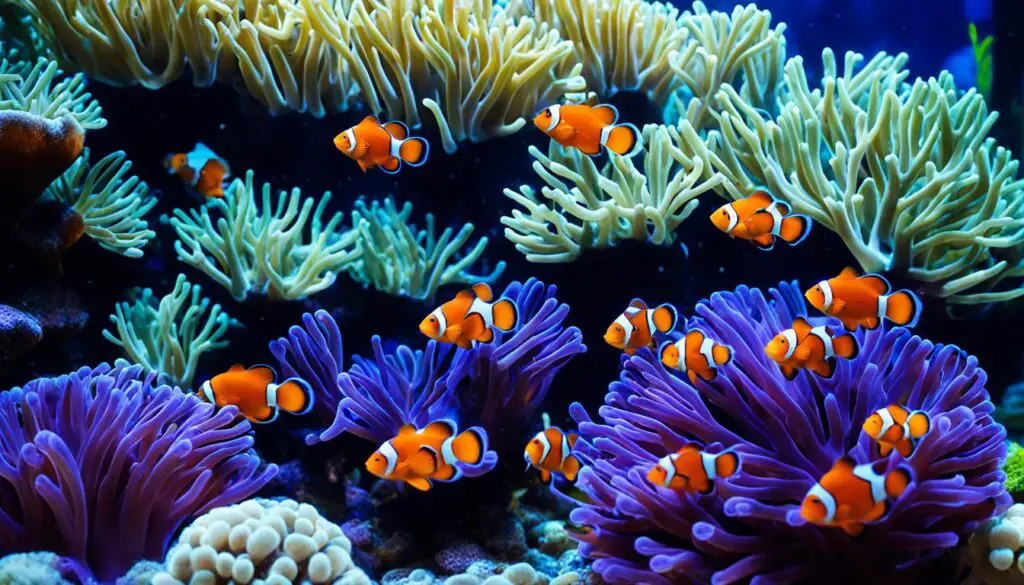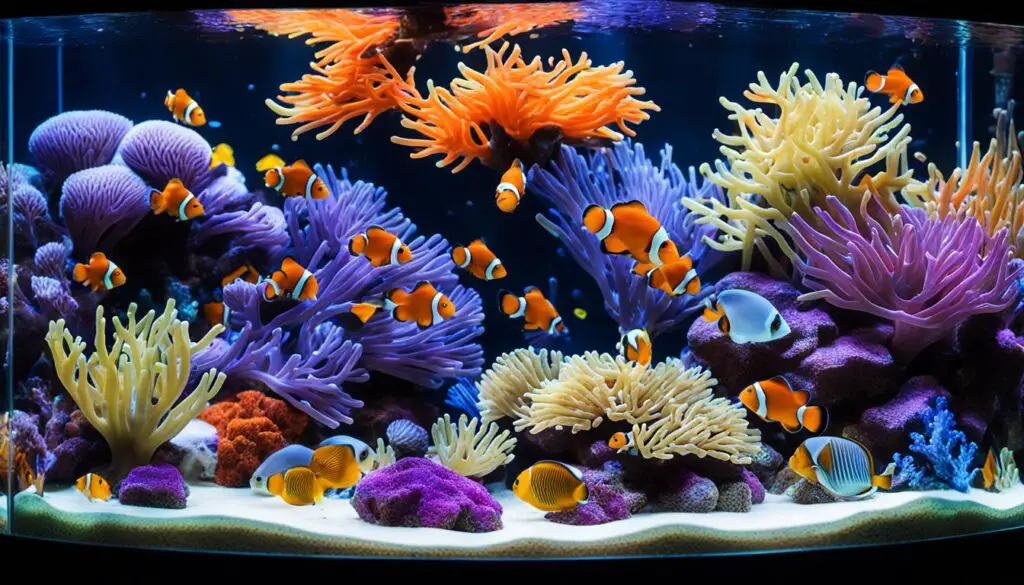Do Dolphins Play With Puffer Fish

Introduction
Dolphins, those charismatic marine mammals known for their intelligence and playful nature, often engage in intriguing and seemingly unconventional behaviors. One of the most captivating and enigmatic activities observed in dolphins is their interaction with puffer fish. This peculiar relationship has piqued the curiosity of scientists, marine enthusiasts, and animal behaviorists alike, prompting them to delve deeper into this fascinating phenomenon.
At first glance, the idea of dolphins playing with puffer fish may seem improbable. After all, puffer fish are infamous for their ability to inflate into spiky, toxic balloons when threatened—a defense mechanism that would deter most creatures. However, dolphins have been documented exhibiting a remarkable affinity for these well-armed underwater creatures, prompting speculation about the motives behind this behavior.
This behavior not only showcases the dolphins’ playful and inquisitive nature but also raises intriguing questions about interspecies interactions in the aquatic realm. Researchers have sought to understand the motivations behind this seemingly risky game, exploring whether it’s purely a form of amusement, a means of obtaining a chemical high, or a demonstration of advanced cognitive abilities.

Do dolphins push around pufferfish?
Playing with pufferfish could serve as a recreational activity, enabling dolphins to strengthen social bonds within their pod. The playful interaction may involve tossing or pushing the pufferfish gently, providing both physical and mental stimulation for the dolphins.
The behavior of dolphins interacting with pufferfish is a subject of great intrigue and curiosity among marine biologists and animal behaviorists. While it’s true that dolphins have been observed interacting with pufferfish, the exact nature of these interactions is a topic of ongoing research and debate.
Some observations suggest that dolphins may indeed “push around” pufferfish, but the reasons behind this behavior remain speculative. It’s essential to note that the interactions between dolphins and pufferfish are complex and multifaceted, and they may not always involve aggression or playfulness.
Do dolphins use pufferfish as toys?
Photographs of a young dolphin playing with a pufferfish have revived interest in the idea that the dolphins are using the fish’s toxins to get high. The same behavior has been recorded before but the latest images show dolphins can get started before their first birthday.
The intriguing relationship between dolphins and pufferfish has led many to wonder if these intelligent marine mammals use pufferfish as toys. While this hypothesis is captivating, the reality may be more complex than a simple game of fetch beneath the waves.
Dolphins are known for their playful nature, often engaging in activities that seem purely for amusement. Their interactions with various objects, including seaweed, shells, and even the occasional human-made item, suggest a propensity for play. When it comes to pufferfish, some observations depict dolphins gently toying with these spiky, potentially toxic creatures. They may nudge or pass them between one another, seemingly reveling in the novelty of their inflatable nature.
What do dolphins like to play with?
Dolphins will play with almost anything—balls, feathers, driftwood, seaweed, and even their food when they are full. They also play with other sea animals—turtles, fish, seals, birds, and whales—whether the other animals want to play or not!
Puffer Fish: As previously mentioned, dolphins are known to play with puffer fish, seemingly enjoying the challenge of avoiding the fish’s defensive spikes. Some researchers speculate that they might also derive pleasure from the toxins released by the puffer fish, akin to a recreational “high.”
Seaweed and Kelp: Dolphins can often be seen twirling and manipulating strands of seaweed or kelp, perhaps relishing the tactile sensation and the challenge of keeping their aquatic gardens intact.
Bubbles: Dolphins are renowned for their fascination with bubbles. They create and chase bubbles by exhaling rapidly underwater, showcasing their dexterity and agility as they interact with these ephemeral, iridescent spheres.
Human-Made Objects: Inquisitive by nature, dolphins occasionally engage with human-made objects, such as boats, buoys, or discarded items like plastic bottles. These interactions might be driven by curiosity or simply a desire for novel stimuli.
Can puffer fish be friendly?
These fish are undeniably cute, and they often interact with their keepers. Once settled in, Amazon puffers are not at all shy, and they quickly figure out where the food comes from.
Puffer fish, often known for their iconic defensive behavior of puffing up into spiky, balloon-like creatures, might not seem like the friendliest of aquatic inhabitants at first glance. However, there is more to these unique fish than meets the eye. While they do possess a potent defense mechanism, puffer fish can indeed exhibit friendly and even sociable behaviors under the right circumstances.
In captivity, puffer fish have been known to form bonds with their human caregivers, displaying a level of familiarity and trust that might surprise some. They can recognize their caregivers and even respond to their presence with enthusiasm, often approaching the tank’s glass when someone they recognize is nearby. This apparent friendliness may be attributed to their ability to associate humans with food provisioning and a stable environment.
Can I hug a dolphin?
Never touch or pet dolphins, even if they come close enough to touch. Use binoculars to watch dolphins from a safe distance in their natural habitat instead. Hugging a dolphin is a desire many people harbor due to these charismatic marine creatures’ friendly and seemingly affectionate nature. However, hugging a wild dolphin is not recommended and, in most cases, not possible. Interacting with dolphins in their natural habitat requires careful consideration of their well-being, as well as conservation guidelines and regulations.
In the wild, dolphins are best observed from a respectful distance to avoid causing them undue stress or harm. Approaching them too closely, attempting to touch, or hug them can disrupt their natural behaviors, potentially putting both the dolphins and humans at risk. It’s essential to remember that these are wild animals, and their responses can be unpredictable.
Is playing with puffer fish harmful to dolphins?
There’s no strong evidence to suggest that playing with puffer fish is harmful to dolphins. In fact, it’s often considered a harmless and playful interaction.
Playing with puffer fish is generally not considered harmful to dolphins. While it might seem counterintuitive to interact with a creature known for its toxic defense mechanism, dolphins exhibit a certain level of caution and finesse during these playful encounters. Dolphins, known for their high intelligence, are aware of the potential dangers associated with puffer fish.
When dolphins play with puffer fish, they typically avoid the ingestion of toxic parts, such as the skin and organs containing tetrodotoxin. Instead, they seem more interested in the puffer fish’s intriguing ability to inflate into a spiky ball. They often gently toss them or nudge them with their noses. This behavior suggests that dolphins view puffer fish as curious objects of interest rather than prey.
Do puffer fish release toxins when dolphins play with them?
Puffer fish are known to contain toxins, but when dolphins play with them, they usually avoid the ingestion of toxic parts. Dolphins seem to be cautious and may not fully puncture the puffer fish’s skin.Puffer fish, known for their remarkable ability to inflate their bodies into a spiky, balloon-like shape as a defense mechanism, do indeed contain toxins. These toxins, collectively referred to as tetrodotoxin, are potent neurotoxins that can be lethal to predators if ingested in sufficient quantities. However, the question of whether puffer fish release toxins when dolphins play with them is a complex one.
Dolphins, known for their intelligence and playful nature, have been observed engaging in seemingly playful interactions with puffer fish. During these encounters, dolphins may gently nudge, toss, or swim alongside the puffer fish. While some initial concerns were raised about the potential release of toxins, studies and observations suggest that dolphins are remarkably adept at avoiding the toxic parts of the puffer fish.
Are there any recorded incidents of dolphins getting injured while playing with puffer fish?
While there have been some reports of dolphins getting minor injuries like puncture wounds, serious harm or fatalities resulting from playing with puffer fish are rare.
While dolphins are known to engage in playful interactions with puffer fish, recorded incidents of dolphins sustaining injuries during these encounters are relatively rare. Dolphins, highly intelligent marine mammals, exhibit a degree of caution when interacting with these spiky creatures. They seem to be well aware of the potential dangers associated with puffer fish, which possess a unique defense mechanism: the ability to inflate into a spiky ball when threatened.
Dolphins primarily use their rostrums (noses) to nudge, toss, or gently handle the puffer fish. This careful manipulation suggests that dolphins are cautious not to puncture the puffer fish’s skin, which could result in injury to the dolphins themselves due to the release of toxins from the fish.
Do dolphins eat puffer fish after playing with them?
Generally, dolphins do not consume puffer fish after playing with them. Dolphins have been observed releasing the fish after their playful interactions.
Dolphins do not typically eat puffer fish after playing with them. The interaction between dolphins and puffer fish is primarily considered a form of play or curiosity rather than a hunting behavior. Dolphins are highly intelligent and inquisitive creatures known for their playful nature, and they often engage in various behaviors to stimulate their minds and pass the time.
When dolphins encounter puffer fish, they may exhibit a range of playful behaviors, such as tossing them in the water, gently nudging them with their noses, or even swimming alongside them. However, they generally do not consume puffer fish during or after these interactions.
Is the interaction between dolphins and puffer fish beneficial for either species?
This interaction is primarily a form of play for dolphins and does not seem to have any significant benefits or drawbacks for either species. It’s an intriguing natural behavior that continues to be studied by scientists interested in dolphin behavior and cognition.
For dolphins, playing with puffer fish serves as a form of mental stimulation and entertainment. Dolphins are highly intelligent creatures that thrive on engaging their minds, and the puffer fish’s unique ability to inflate into a spiky ball provides an intriguing source of amusement. This interaction may help dolphins sharpen their problem-solving skills and creativity as they figure out how to handle the puffer fish without harming themselves.
On the other hand, puffer fish don’t seem to receive any direct advantages from these playful encounters. They are not prey for dolphins during these interactions, as dolphins typically do not consume them afterward. Puffer fish are known for their defensive toxins, which they release when threatened, but in most cases, the dolphins’ playful interactions do not trigger this defense mechanism.

Conclusion
Dolphins, as highly intelligent creatures, engage in these playful encounters with puffer fish as a form of mental stimulation and entertainment. These interactions serve as a testament to their adaptability and problem-solving abilities, as they delicately handle the puffer fish without triggering the fish’s toxic defenses. It’s a fascinating display of their cognitive prowess and adaptability.
On the other hand, puffer fish, while not appearing to derive any direct benefits from these interactions, inadvertently contribute to our understanding of their defensive mechanisms and the unique ways they adapt to survive in the oceanic environment.



